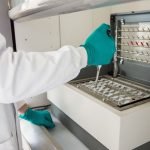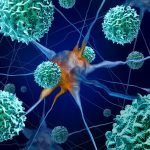Neurons in the Adult Brain are More Adaptable than Previously Thought
Node Smith, ND
A very interesting discovery was made recently at a laboratory at UT Southwestern when scientists attempted to transform glial cells into dopaminergic neurons, like those lost in Parkinson’s disease. Instead of glial cell transformation through a stem cell state, the researchers managed to transform mature inhibitory neurons into those that produce dopamine.
Study confirms the ability for mature neurons to change into other types of neurons sans reliance on stem cells
This study, which was published in Stem Cell Reports, confirms the ability for mature neurons to change into other types of neurons without a reliance on stem cells. This is contrary to the historical view of the neuron life cycle, which has long held the belief that neurons are locked into their identity long before adulthood, and that one type of neuron cannot morph into another type.
“To find that we could manipulate neurons to change their identity in adulthood was truly unexpected,” said Dr. Zhang, a W.W. Caruth, Jr. Scholar in Biomedical Research, adding that insights into neuronal plasticity and cell identity maintenance may someday lead to therapeutic strategies for treating neurological diseases through reprogramming of local neurons.
Possibility of creating new dopamine-producing neurons is very important
The possibility of creating new dopamine-producing neurons is very important since these are the type of neurons that are responsible for movement disorders like Parkinson’s disease. Dopaminergic neurons are necessary for controlling voluntary movement and balancing motivation and reward, which drive behavior.
There is more to this than simply creating more dopaminergic neurons, however. For the brain to function properly, neurotransmitters like GABA and dopamine have to be balanced. For instance, since dopamine is involved in reward behavior, and specifically addictive behaviors, any treatment which increases dopamine levels needs a method to keep the other neurotransmitters in balance as well.
Mature medium spiny neurons transformed into GABA producing neurons
The mature medium spiny neurons that were transformed into dopaminergic neurons which happened to be GABA producing neurons. GABA is an inhibitory neurotransmitter that calms down the brain.
Unexpected results lead to an intense series of follow-up experiments
This was very unexpected and led to an intense series of follow-up experiments that did confirm that the new cells were transformed from mature GABA neurons.
“Rather than originating from glia, the new dopamine cells came from local, existing mature neurons without passing through a stem cell state,” Dr. Zhang said. “This is a mature cell-to-mature cell transformation.”
 Node Smith, ND, is a naturopathic physician in Portland, OR and associate editor for NDNR. He has been instrumental in maintaining a firm connection to the philosophy and heritage of naturopathic medicine among the next generation of docs. He helped found the first multi-generational experiential retreat, which brings elders, alumni, and students together for a weekend camp-out where naturopathic medicine and medical philosophy are experienced in nature. Four years ago he helped found the non-profit, Association for Naturopathic ReVitalization (ANR), for which he serves as the board chairman. ANR has a mission to inspire health practitioners to embody the naturopathic principles through experiential education. Node also has a firm belief that the next era of naturopathic medicine will see a resurgence of in-patient facilities which use fasting, earthing, hydrotherapy and homeopathy to bring people back from chronic diseases of modern living; he is involved in numerous conversations and projects to bring about this vision.
Node Smith, ND, is a naturopathic physician in Portland, OR and associate editor for NDNR. He has been instrumental in maintaining a firm connection to the philosophy and heritage of naturopathic medicine among the next generation of docs. He helped found the first multi-generational experiential retreat, which brings elders, alumni, and students together for a weekend camp-out where naturopathic medicine and medical philosophy are experienced in nature. Four years ago he helped found the non-profit, Association for Naturopathic ReVitalization (ANR), for which he serves as the board chairman. ANR has a mission to inspire health practitioners to embody the naturopathic principles through experiential education. Node also has a firm belief that the next era of naturopathic medicine will see a resurgence of in-patient facilities which use fasting, earthing, hydrotherapy and homeopathy to bring people back from chronic diseases of modern living; he is involved in numerous conversations and projects to bring about this vision.










